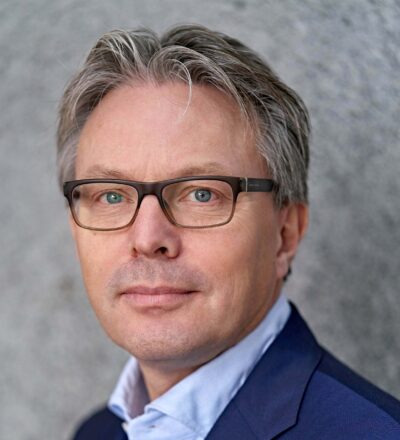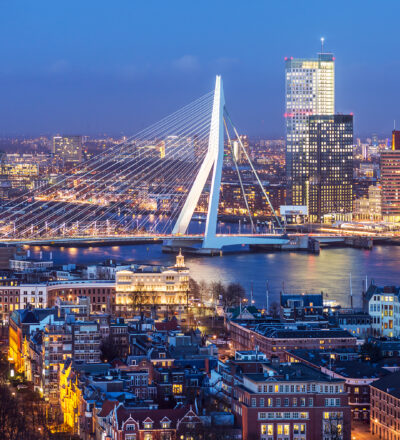The way we manage energy and materials has profound implications for our planet’s biodiversity and the health of our living environments. Continuing along our current trajectory risks pushing the Earth’s boundaries. Nevertheless, we must persist in meeting societal and economic needs, think for example of constructing homes, manufacturing goods, facilitating mobility, and cultivating food. Achieving sustainability in industry thus not only necessitates the adoption of cleaner and more efficient energy sources, but also a different way of managing materials and resources. This urges a shift towards a circular process industry.
In this three-part series, we delve into the future landscape of the Dutch process industry. Alongside Marjolein Demmers (Natuur & Milieu) and Nico van Dooren (Port of Rotterdam), we examine the progress made, necessary advancements, and envisioned changes concerning the energy and material transition. What drives our society to urgently transition its materials usage? And how can this be achieved?

Nico van Dooren, director New Business PoR

The material transition lags behind
“The industry has contributed much to our society. From basic necessities and products, to prosperity, and employment. However, the industry has also resulted in significant emissions,” begins Marjolein Demmers from Natuur & Milieu. “There is widespread agreement that continuing with our current energy- and production-models will lead us to exceed the Earth’s sustainable limits. The consequences of climate change, biodiversity loss, and air pollution already profoundly impact our lives, evident in recent weather extremes or floods. Our climate and biodiversity are now at risk of irreparable damage. This awareness is now prevalent within both society and industry. This does not mean that this is the end of our industry, but rather that it needs to change.”
Marjolein Demmers further elaborates: “Our reliance on fossil fuels as the foundation of our economy is no longer sustainable. In recent years, significant strides have been made in sustainable energy, with concrete plans, enacted legislation, and incentivizing policies already in the implementation phase. However, the use of fossil resources also needs to be phased out within our raw materials, and this so-called material transition currently lags behind. Although goals are set, they lack stringency, and policy formulation remains underdeveloped. The material transition is also much less prominent in society, with no widely adopted approaches for a circular economy. We must realize that the transition to recycled and renewable materials is equally important. Ultimately, to sustain meeting societal needs, such as building homes, growing food, and manufacturing products, both energy and resources are indispensable. Therefore, the focus should be on accelerating both transitions.”
This is part 2 in a series of 3 about the material transition and a circular process industry:
Part 1 – Material transition: the Dutch opportunity to fast-track a circular Europe
Part 2 – From theory to action: Implementing circularity in the Dutch process industry
Part 3 – Material change across industry, government, and society
Global chains converge in Port of Rotterdam
Nico van Dooren, representing the Port of Rotterdam, expands on the broader scope of the material transition, stating that the two transitions differ significantly in their complexity and impact. “While the energy transition primarily focuses on reducing CO2 emissions, the materials transition encompasses various facets. This shift entails not only achieving net-zero production emissions, but also transitioning toward renewable and recyclable products, moving away from finite resources that face rapid depletion. The raw materials we use should remain in the chain for as long as possible. This, however, makes this transition much more complex. It occurs within intricate chains characterized by diverse product life cycles and material flows. Addressing this necessitates an integrated approach across the entire value chain, shifting from a linear model to a circular one within our economy.”
“The Port of Rotterdam plays a pivotal role in advancing these transformative processes,” continues Nico van Dooren. “Occupying a strategic position, the port serves as a convergence point for a variety of global supply chains, complemented by Rotterdam’s robust industrial cluster and connected with other industrial clusters in Northwest-Europe via pipelines and waterways. These factors converge to facilitate the realization of an industrial cluster, based on sustainability and circularity. This lies, for example, in the import of sustainable energies, including green ammonia or methanol, which can be cracked and processed in our industrial cluster. Making this shift is a necessity, as we believe that an economically viable port can only be a sustainable one. Advancing this transition not only aligns with Dutch climate objectives, but also fosters job creation, secures long-term economic prosperity, and increases the autonomy and independence of the Netherlands and Europe.”
The urgency for circularity is growing
“The pressing questions we face are: How can businesses in the port area transition to a sustainable economy, achieving climate and circularity goals whilst preserving economic value?” remarks Nico van Dooren. “At Port of Rotterdam, we have a program for the transition based on four pillars: constructing new energy infrastructure, building a new energy system, building a new raw materials and fuels system, and making transport sustainable. Progress is evident in all four areas, with recent developments like investments in Europe’s largest electrolyzer that produces green hydrogen, two new biofuel refineries, and pipelines for hydrogen and CO2. However, concerns and obstacles persist, hindering progress despite the urgent need. We primarily observe barriers that revolve around investment and policy challenges,” Nico van Dooren emphasizes. “Currently, there’s a notable flow of investments towards the US, diverting attention and resources from our own transition efforts. Additionally, policies often lack clarity, for example regarding waste stream definitions. Yet, time is of the essence: with the climate goals for 2030 and 2050 getting closer, and the increasing urgency of the climate crisis, swift action is needed.”
“Effective policy is indeed crucial to drive and incentivize the circular economy,” emphasizes Marjolein Demmers. “We need policies that reduce the use of and demand for materials and products, promote circular products, and gradually decrease reliance on fossil fuels and feedstock. Collaboration within the industry between the different links of the value chain is essential to address complexities in identifying options in reducing raw material use and ensuring product repairability and high-quality recycling across diverse and complex chains. Additionally, this transition also takes place on a consumer level; pricing and standardization can guide sustainable choices. Providing more information about supply chains can make the transition more tangible and raise awareness effectively. Let’s move away from the technical narrative and show how it impacts our daily lives. It’s achievable by 2050, but that does mean we have to roll up our sleeves today.”
ISPT developed sustainability programs together with the industry
The raw materials transition is becoming increasingly complex. So complex, that the need for companies to join forces is becoming stronger. It is no longer about individual process innovations, but about system innovation and closing the chain together.
Joining ISPT means access to knowledge and people. We share costs and risks, and you’ll take the know-how back home with you, accelerating the growth of your own organization. Interested in our work? Subscribe to our newsletter, follow our LinkedIn or contact our wonderful team.
